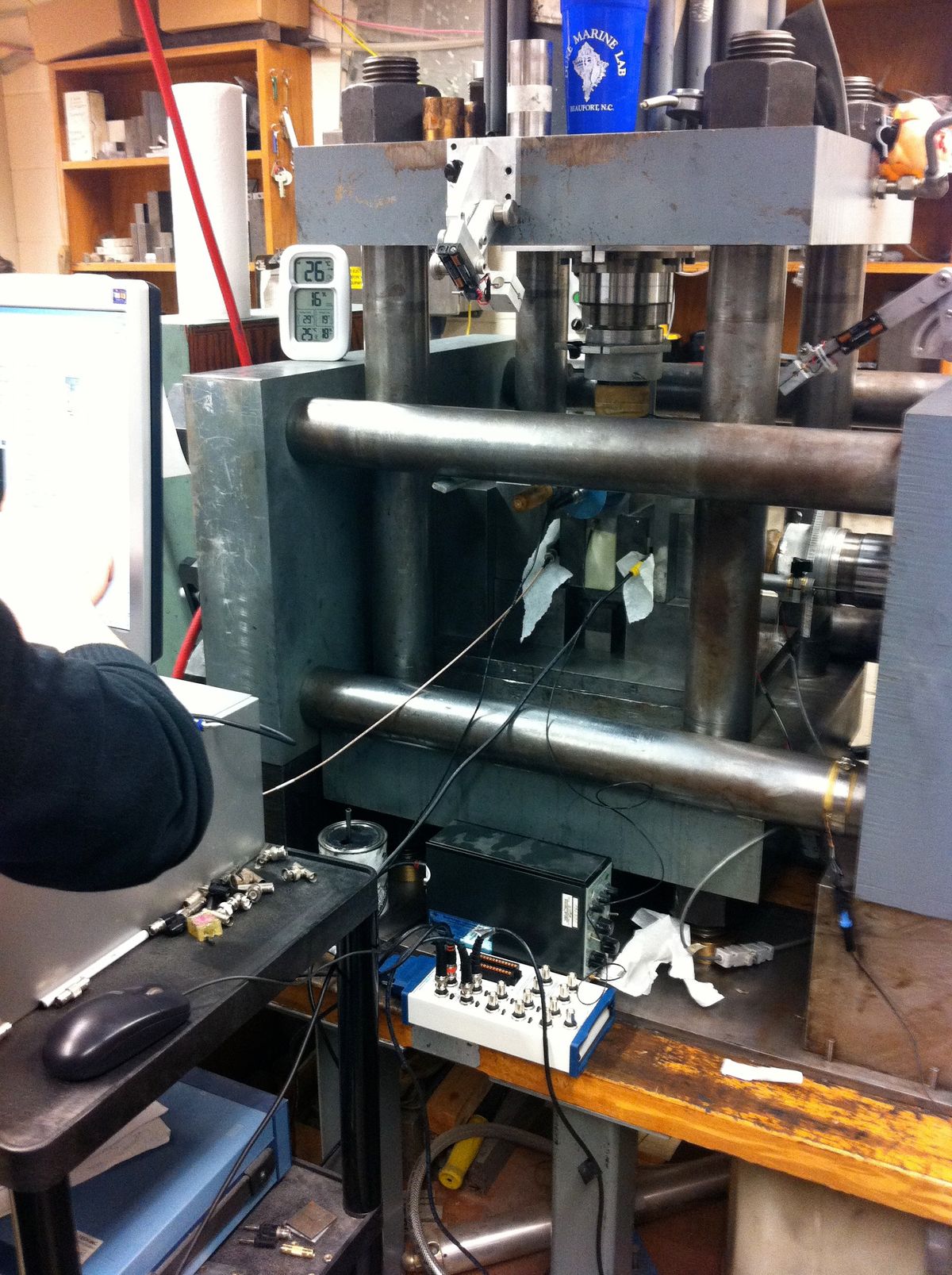
Faults May Emit Earthquake Warning Signs

There are tantalizing hints some faults issue warning signals in the days and months before a big earthquake, according to new research.
A study of squeaky glass beads squeezed between powerful pistons offers one explanation for how these earthquake warning signals form. The findings were published online Nov. 4 in the journal Geophysical Research Letters.
The signals range from tiny shocks along the fault, which may be beyond the limit of detection by today's seismic monitors, to earthquakes large enough to rattle houses. The common thread is that the final rip — the main earthquake — strikes at or near the site of the smaller, earlier breaks.
"They are associated with small failures along the fault patch that is going to fail catastrophically," said Paul Johnson, a geophysicist at Los Alamos National Laboratory in New Mexico and lead study author.
Making a link between these earthquake precursors and the "big one" is controversial in the world of earthquake research. While many laboratory studies indicate there are seismic warning signals to watch for, in the real world, not all earthquakes have foreshocks, as these preliminary shakers are known. Still, geoscientists hope that by better understanding what happens before an earthquake, they may one day have a means of warning the public of increased earthquake risk.
"I think we're seeing the beginning of something potentially really exciting for characterizing an area of increased hazard," Johnson said. "We're not going to predict when an event takes place. [But] this kind of observation can be tested to see whether or not this information will be useful for earthquake hazard and predicting intervals of increased seismic risk." [13 Crazy Earthquake Facts]
Quake lab
Sign up for the Live Science daily newsletter now
Get the world’s most fascinating discoveries delivered straight to your inbox.
In the study, Johnson and his collaborators built a laboratory model that mimics an earthquake fault. The squeaky beads represent gouge, the crushed, ripped-up clay and rock that lines faults. Pressing the beads between two plates imitates the forces that cause earthquakes.
The researchers discovered that the beads start squeaking not long before the laboratory earthquake hits. These "acoustic emissions" are equivalent to small earthquakes on real-world faults, Johnson said.
The study adds to growing evidence that a dense network of quake monitors called seismometers could detect these signals and warn of the increased hazard, Johnson said.
"Most precursors are very small, so if you don't have instruments on the fault or very near the fault, then you're just not going to see them," he said. "These are very small compared to the actual earthquakes."
Controversial concept
But many researchers think the laboratory models that suggest earthquake warnings exist don't translate into real-world alerts.
Unlike a lab model, faults in the Earth are filled with fluids, heated to high temperatures, and undergo complex stresses, said Justin Rubinstein, a research geophysicist with the U.S. Geological Survey in Menlo Park, Calif. "It's a dangerous leap to try and take what we see in the lab and say it should happen in real life," Rubinstein said. "Right now, I don't think there's a convincing case that can be made. Sometimes, you get a foreshock sequence, and sometimes you don't."
But Rubinstein also thinks such models are worth careful exploration. "If there are precursors, it would be valuable for us to understand, because obviously, it would be fantastic if we could predict earthquakes," he said.
Email Becky Oskin or follow her @beckyoskin. Follow OurAmazingPlanet @OAPlanet, Facebook and Google+. Original article at LiveScience's OurAmazingPlanet.












